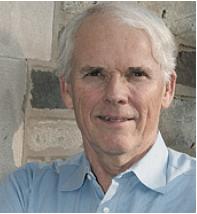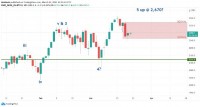|
By Mark Melin Managed futures is typically an investment often perceptually correlated to mathematical probability and quantitative-based strategies. But there is a strong breed of manager, often taking a more traditional discretionary "hedge fund" approach to humanbased trade logic, who can provide interesting correlation benefits in a portfolio. This group of managers prove that it is not managed futures that provides the diversification, but rather the strategies the managers employ. Discretionary managed futures strategies are those defined as using human-driven decision models or combining more than one strategy. Proprietary performance study benchmarks1 discretionary strategies as having the second lowest worst drawdown average, at 20.61%, compared to average trend following drawdown of 24.92%. Perhaps most interesting is the category's downside deviation, the sophisticated risk manager's look at how well a risk program operates during a relative crisis situation. Discretionary traders in this study had a downside deviation of 2.41%, on average, compared with a 3.08% downside volatility with trend following. (The strategy study referenced in this report is not designed to be definitive, but rather used as a guidepost for relative value analysis. See footnote for study details.) 
Former Commodity Corporation executive Lee Gladden, now chief executive officer at Witherspoon Asset Management, discusses correlation risk in a single strategy portfolio.
Discretionary traders produced interesting relative downside volatility numbers and as a general category measured in this limited study, they have controlled loss size to a greater degree in the past. Based on the study average loss size in this category was 2.85% while 3.63% was the average in the trend following category. While such studies of performance are not empirically definitive, they do provide insight into risk management protocols one might consider when evaluating and managing the investment going forward. Trend following typically makes up nearly 70% of all core strategy types in manged futures. Enter Witherspoon Asset Management, a group of former Commodity Corporation executives who launched a managed futures mutual fund targeted to provide a multi-strategy portfolio of managers averaging 75% discretionary and tactical specialists and 25% systematic / trend following. It is for this reason Witherspoon's recently launched Managed Futures Strategy Fund (ticker: CTAAX, CTAIX) is interesting. Over 90% of single manager managed futures mutual funds significantly favor trend following. "Discretionary sources of alpha are underrepresented in the current managed futures funds," said Lee Gladden, who has over 30 years experience in managed futures which began with Commodities Corporation (now Goldman Sachs Hedge Fund Strategies Group) in 1981 Witherspoon's focus on discretionary traders and tactical specialists (i.e. non trend-following) dates back to the culture and legacy of Commodities Corporation in Princeton, a history which most of the Witherspoon management team shares. Commodities Corporation was well known as a breeding ground for some of the legendary traders in the industry, including Paul Tudor Jones, Louis Bacon, and Bruce Kovner. "The biggest limitation facing a portfolio composed primarily of trend following managers is that most such managers tend to exhibit high degrees of correlation with one another," Gladden adds. Gladden explains the difference. "Witherspoon usually allocates approximately 75% of the capital in its portfolio to managers who are not trend followers and who have a low correlation with each other. As a result, we believe our portfolio is designed to have less volatility and to be more consistent. Currently we have two trend-followers and seven discretionary traders/tactical specialists in our CTA portfolio." 1. Risk Disclosure / Footnote: Averaged CTA performance is not being represented as reflective of individual performance. Past performance is not indicative of future results. Performance Source: HPMF Strategy Benchmark Performance Study was referenced in this article, 2010 (Wiley). The study on Page 239 was conducted by averaging the performance of all managed futures programs with a 36 month track record or longer reporting to the BarclayHedge CTA database at the time of the reporting period. Spot checking of the study has occurred since 2010 but no inclusive study of the topic has taken place since that point. |
|
This article was published in Opalesque Futures Intelligence.
|





 RSS
RSS











